If you’ve ever owned a bike with disc brakes, you may have experienced some squeaking from time to time when the brakes are applied. When new disc brakes are first broken in, some of the material from the pad is actually transferred to and embedded on the rotor. If this layer of pad material isn’t uniform to begin with, or it gets compromised by contaminants, the pad doesn’t slide smoothly on the rotor and creates tiny vibrations leading to noise. Oil is the worst contaminant, and excess chain lube or spray from the road that contains an oily substance are common culprits.
I’ve been riding in really nasty winter conditions lately, and I began to experience squealing from my disc brakes when they were wet. While the noise is certainly annoying, it’s also your brake’s way of telling you it requires maintenance.
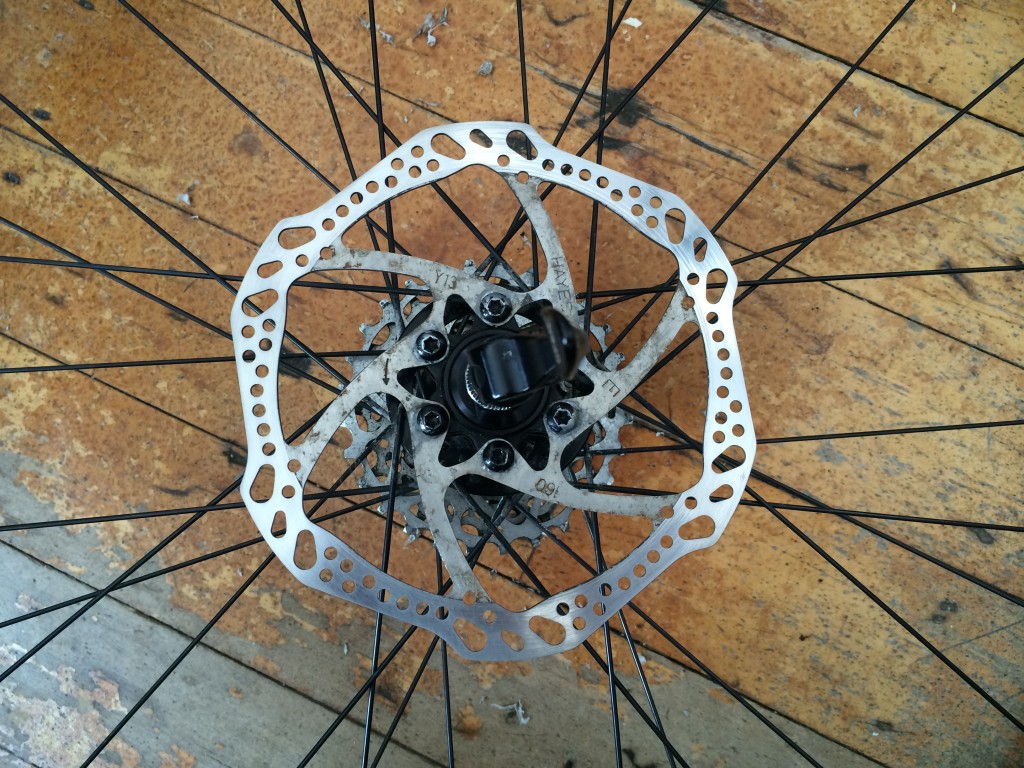
Any vibration of the rotor itself can also lead to noise, so it’s important to ensure it is straight and the calipers are positioned parallel to the rotor. If everything appears properly adjusted, you’ll need to do some cleaning and work on the surface of the rotor and pads. Thoroughly cleaning is key, and there are several products made specifically for this. Muc-Off Disc Brake Cleaner is a favorite but automotive brake cleaner can be used as well.
A simple cleaning will likely get rid of squeal temporarily, but to get to the root of the problem you’ll need to rough up the surface of the rotor. This removes the previous braking surface and any irregularities that may be there. One method is simply sanding, but I have a product called Squeal Out for this experiment. This is a paste that cleans and also roughs up the surface of the rotor and pads when applied.
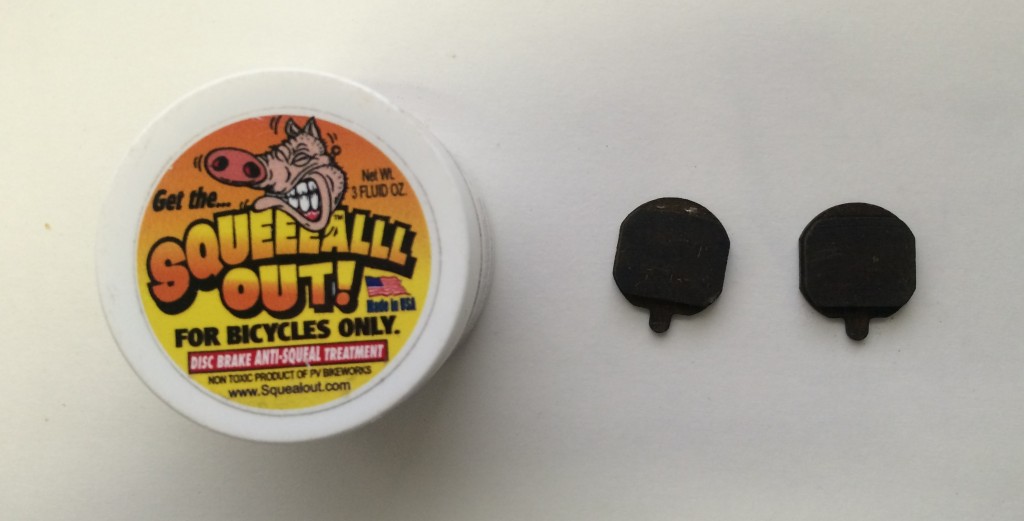
After cleaning the pads and rotor, open the Squeal Out and mix it up before use. I added a few drops of water in this case as is seemed a little dry and difficult to spread.
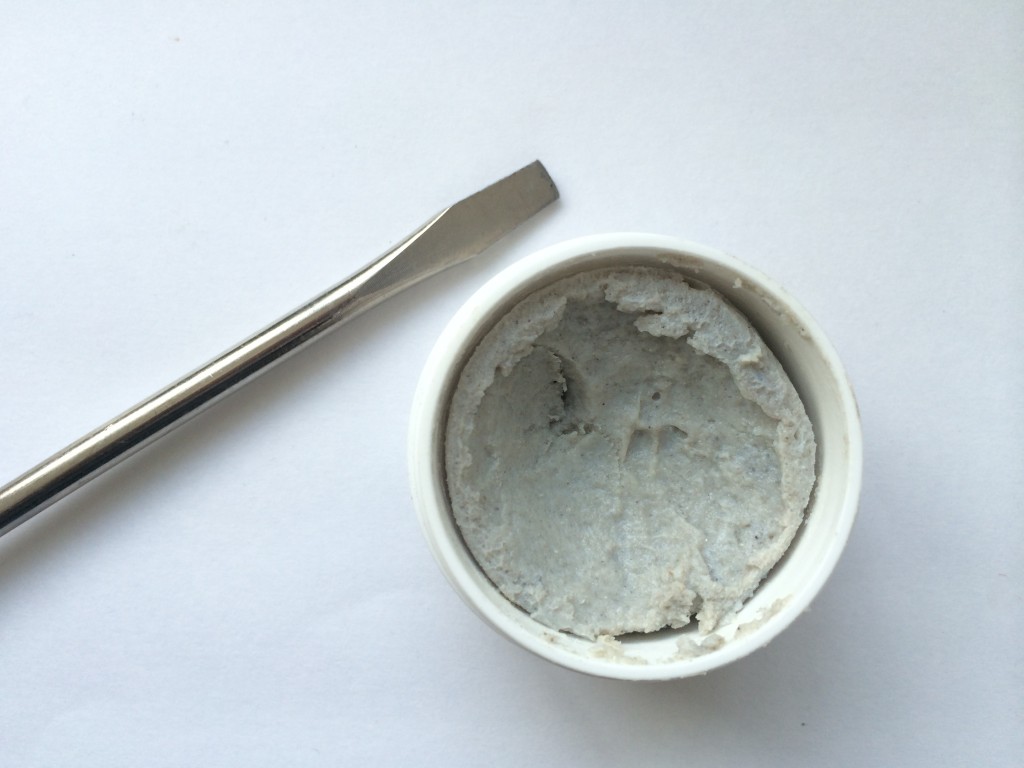
You’ll need to treat one brake at a time with this product as it initially reduces braking power. The best way to work in the paste is riding the bike and engaging the brake, so this will ensure you have at least 1 brake functioning at 100% power. First, apply the paste directly to the rotor being sure to cover the entire surface with a thin layer.
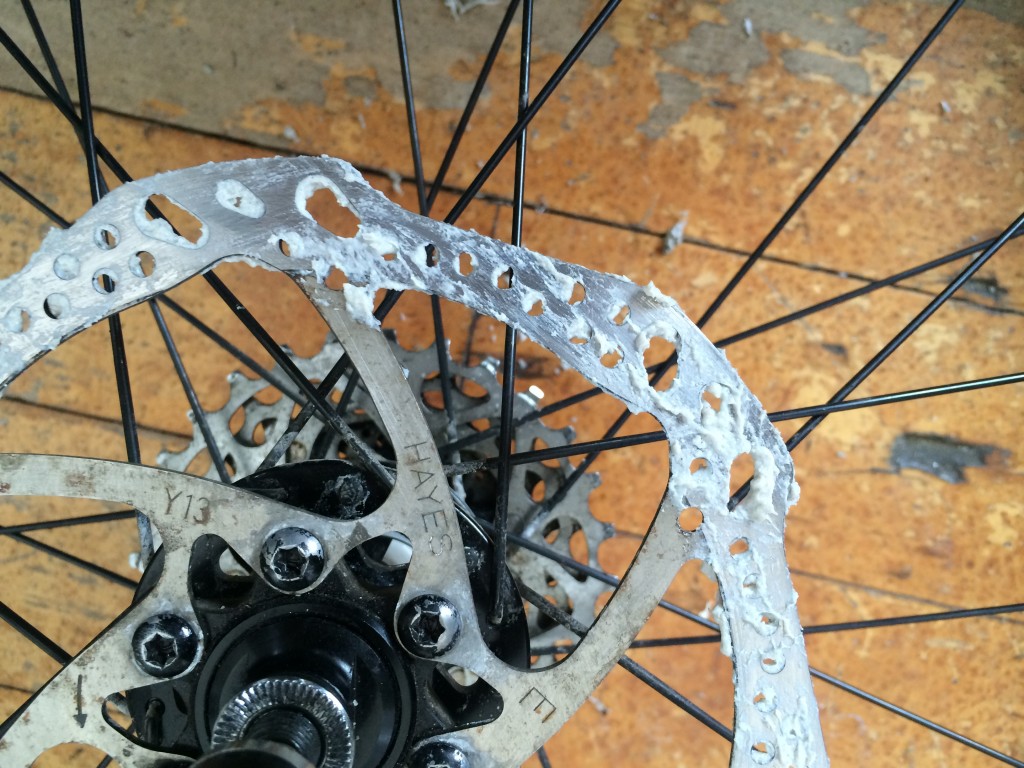
Now roll the bike forward while applying the brake on and off, and do the same while rolling it back. The idea here is to crush the paste between the pads and the rotor. Squeal Out’s instructions say to continue this while rolling the bike 30 yards, but I did it a bit extra. I just rode the bike a bit while dragging the brake and applying it off and on.
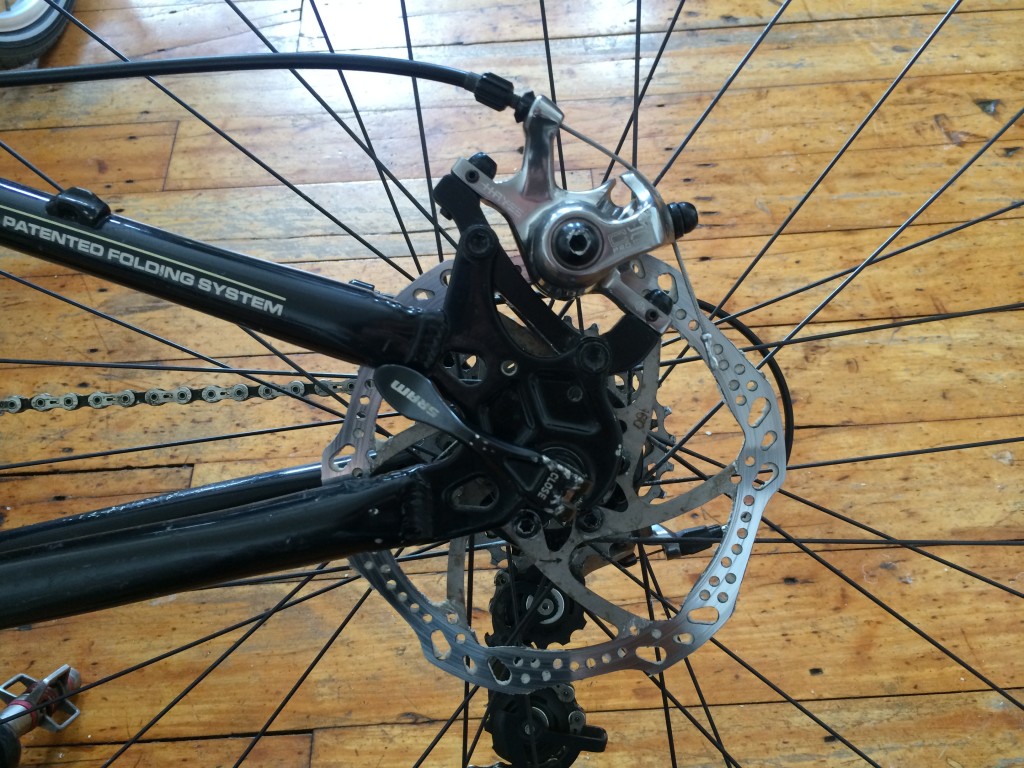
Next, take off the wheel, remove the brake pads, clean off any excess paste and wipe everything down with isopropyl alcohol. (Note: blue ispropyl with minty aroma not necessary, but it worked…)
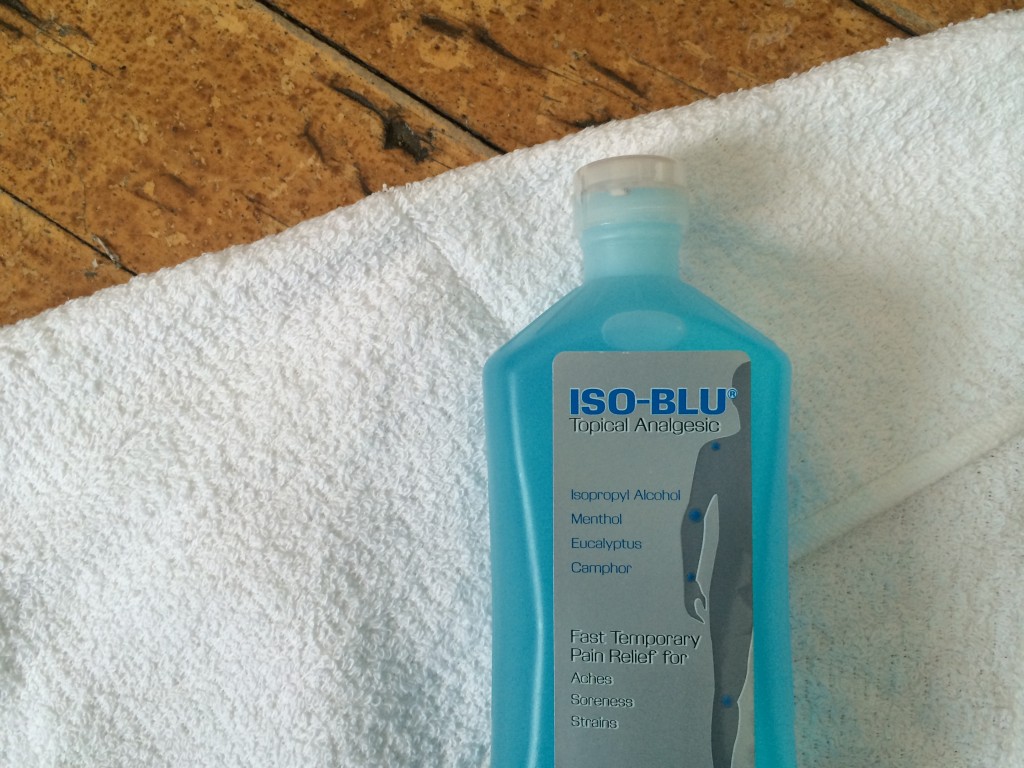
Once everything is reassembled, ride the bike again and brake hard a few times to transfer some of the pad material back to the rotor and restore full braking power.
Review: So far I haven’t experienced any squealing since the treatment, but it did take longer than expected for full braking power to return. I didn’t find it unsafe to ride, but the brakes were just slightly less effective for a few commutes to and from Montague HQ.
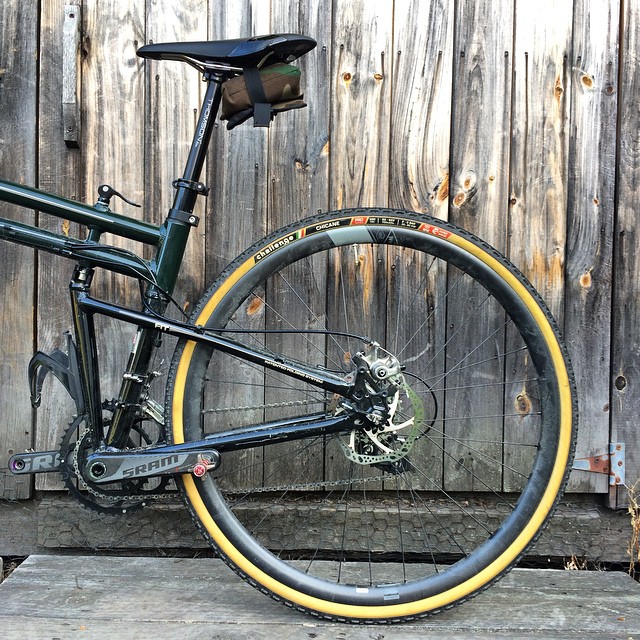


I will just sand everything up.
Xavier, Sanding, as you suggested, is one of the standard treatments but the results aren’t as predictable or as consistent as they are with Squeallll Out which, when applied with proper technique, will work almost 100% of the time.